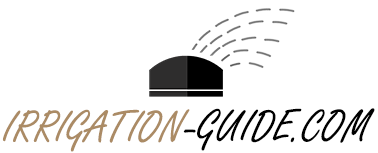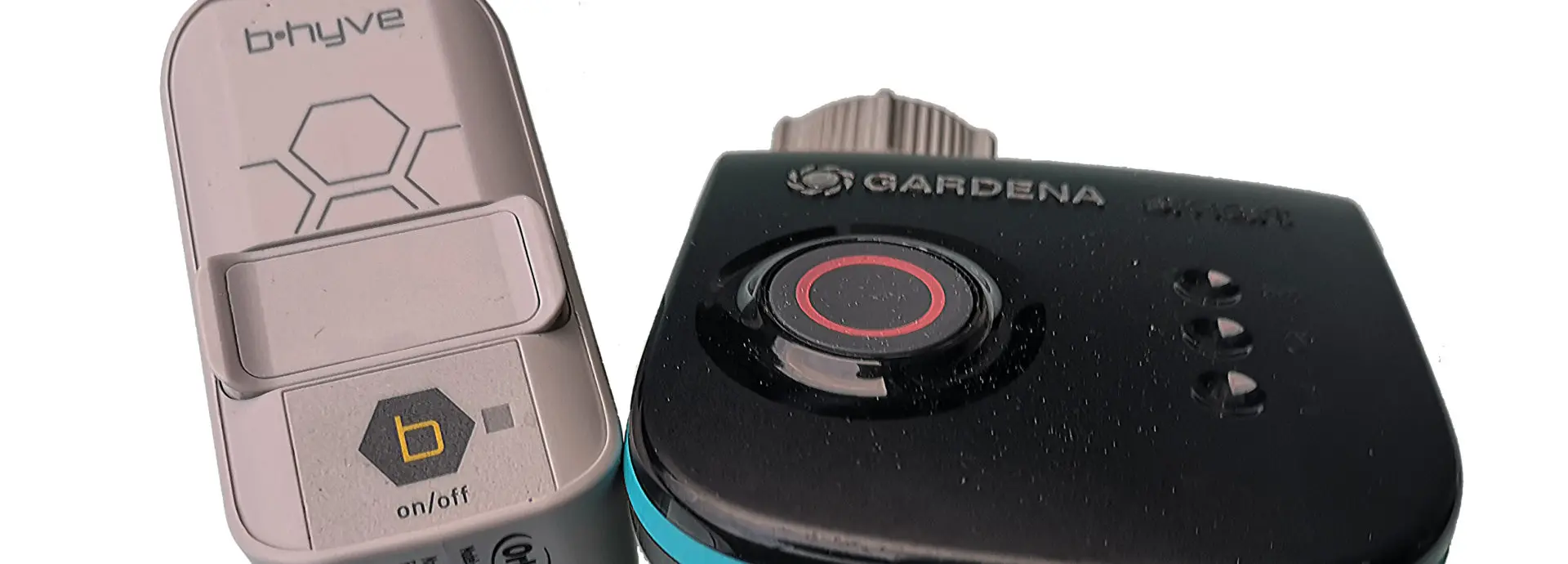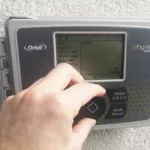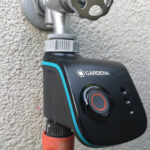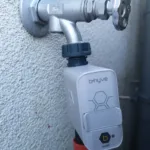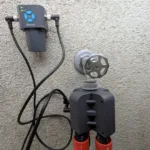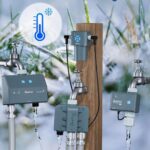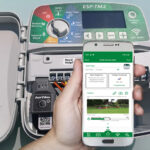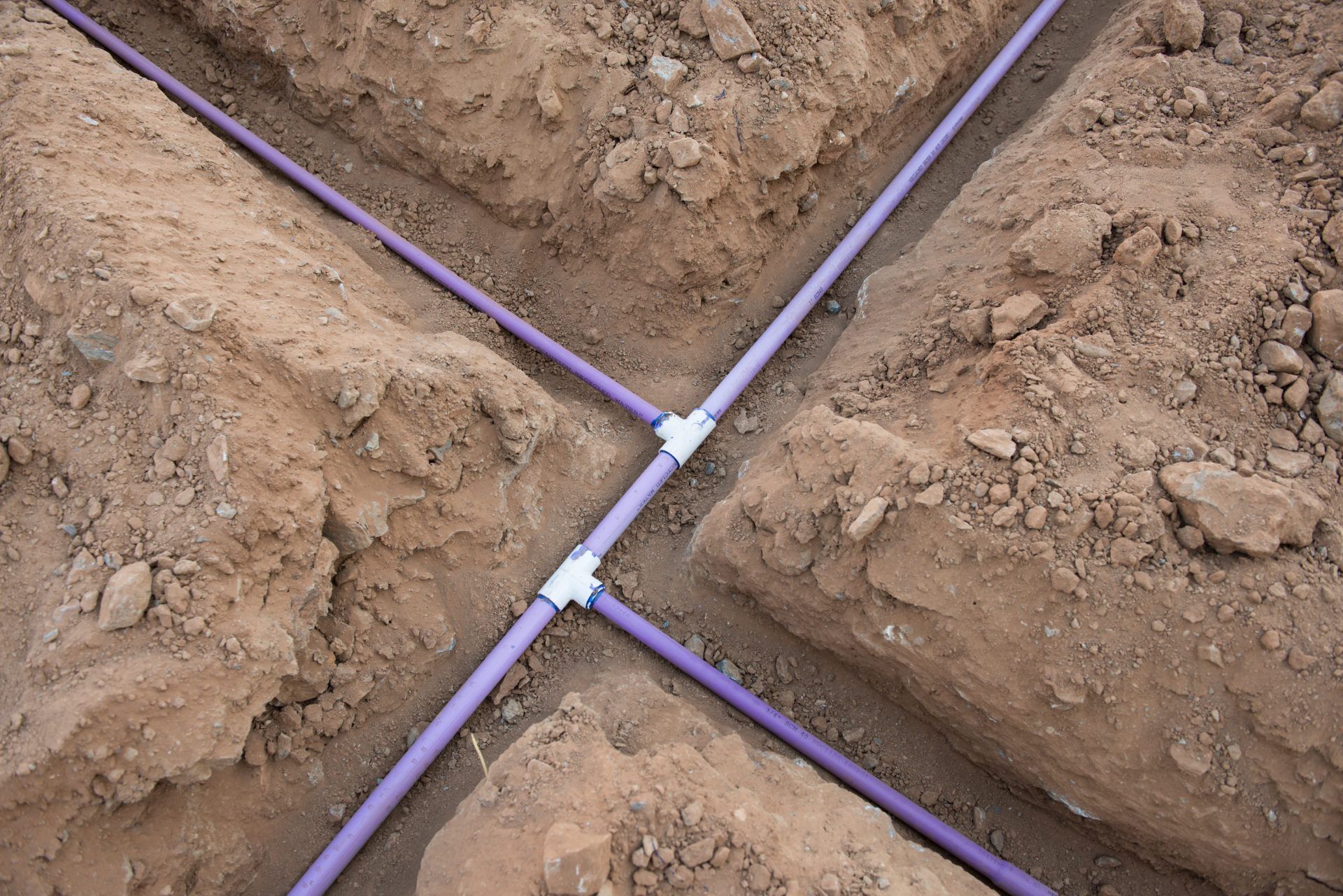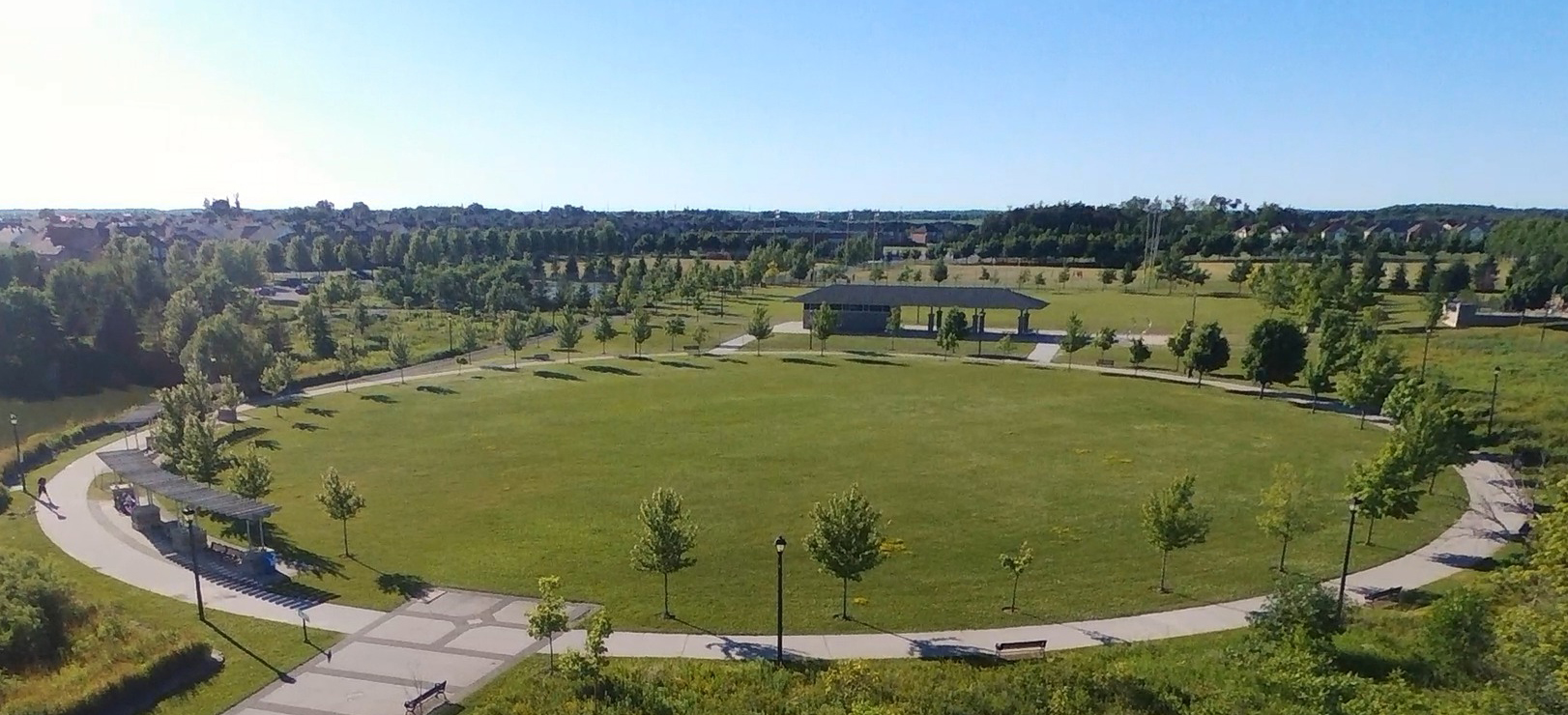If you can believe the advertising, then everyone, without exception. But is that really the case? What does smart irrigation actually do and who can safely do without it? Below is an overview of what is available on the market, what it costs and what it can do better than a conventional irrigation computer.
What is a smart irrigation controller anyway?
A smart device is a networked device, i.e. usually a device that is connected to the web or at least to a local network. The original meaning also implied that it was an “intelligent” product that made one’s daily life easier. The extent to which this still applies to the large number of smart products on offer can be questioned, the term “smart” is nowadays used more simply as a synonym for “web-enabled”.
Which products are offered on the market?
Even with the smart watering computers, a distinction must be made between water tap controllers with integrated valve and irrigation computers for external valve control that do not come into contact with water. Depending on the type of control you want to implement, you need one type or the other. Irrigation producers active in the professional sector such as Hunter, Rain Bird and Toro only offer computers for external valve control, while water tap controllers are offered by a large number of producers.
Some smart watering computers, such as those from Gardena or the LinkTap computer, require an additional gateway to function. This additional device is connected to the web and in turn communicates with the irrigation computer. This interposition of a gateway has the advantage that a wireless system that is more powerful than W-LAN, such as Zigbee, can be used from the gateway to the irrigation computer, so that longer ranges and an even more reliable connection are possible. Such a gateway must be purchased in addition to the irrigation computer, at Gardena about 100 USD are due for it. Other irrigation systems such as Hunter Hydrawise, the web system from Rain Bird or Eve-Aqua connect directly to the W-LAN without an intermediate gateway. Orbit has both irrigation controllers with and without a gateway in its range, the Orbit gateway is relatively inexpensive at around USD 40. Hunter specifies the typical range of a WiFi network as approx. 150 to 200 feet and recommends staying within this range with the Hunter Hydrawise controller in any case.
Below is an overview of the most popular smart irrigation controllers available on the market.
Smart irrigation controller type “water tap controller”:
| Orbit B-Hyve Hose Tap | LinkTap G2S | Eve Aqua | |
|---|---|---|---|
Auto Amazon Links: Could not resolve the given unit type, . Please be sure to update the auto-insert definition if you have deleted the unit. |
Auto Amazon Links: Could not resolve the given unit type, . Please be sure to update the auto-insert definition if you have deleted the unit. |
Auto Amazon Links: Could not resolve the given unit type, . Please be sure to update the auto-insert definition if you have deleted the unit. |
|
| Additional gateway necessary? | Yes | Yes | No |
Smart irrigation controller type “external valve control”:
| Hunter PRO-HC Hydrawise | Orbit B-hyve XR | Rain Bird ST8I-2.0 | |
|---|---|---|---|
Auto Amazon Links: Could not resolve the given unit type, . Please be sure to update the auto-insert definition if you have deleted the unit. |
Auto Amazon Links: Could not resolve the given unit type, . Please be sure to update the auto-insert definition if you have deleted the unit. |
Auto Amazon Links: Could not resolve the given unit type, . Please be sure to update the auto-insert definition if you have deleted the unit. |
|
| Additional gateway necessary? | No | No | No |
Advantages of web-enabled irrigation computers
Below is an overview of the potential benefits of smart irrigation computers.
Remote control of the computer
With the associated app, irrigation computers connected with the web can be controlled and programmed with a mobil phone. Programming is usually easier this way, since it is easier and quicker to carry out via the app than if you have to navigate through the submenus of the irrigation computer using a button navigation. Even a repeated adjustment and refinement of the irrigation programming after the initial setup, which is usually necessary, is more fun and less effort.
The use of the mobile phone as a remote control allows you to start watering from the living room, which saves you having to go to the computer. Programmed watering cycles can be paused, postponed, lengthened or shortened at any time with just one click on the mobile phone.
Operation on the go/during vacation
The computer can be operated from anywhere in the world, regardless of location. It is therefore also possible to start a necessary watering from your workplace or holiday location or to skip it if it has rained enough. You can also allow other people to access the computer via app or web browser.
Water saving by including online weather data
From my point of view, this is the most important reason to buy a smart irrigation controller: Almost all smart irrigation computers now offer the option of obtaining weather data such as rainfall, temperature, wind speed and humidity online and using it to control your own watering. In the good systems, this can be done both on the basis of the weather data of the past few days and based on the weather to be expected in the next few days. Local weather data is used, which reflects the situation at the site of irrigation as accurately as possible.
The overriding goal is always to irrigate sufficiently using as little water as possible, i.e. to only give the plants water when they need it and then only in the amount that they need or can absorb. This saves water and protects both the environment and your wallet.
Some suppliers like Hunter (Hydrawise software), Orbit B-hyve, Rachio, OpenSprinkler and also LinkTap are already very far and offer systems that work well in practice and with which considerable water savings are possible. Rain Bird and Gardena are not quite there yet, but have taken the first successful steps in this direction. Retrieving the online weather data is basically free in all systems, there are no running costs for it, but sometimes optional paid updates are offered, with which you can have even more precise data or retrieve the data even more up-to-date or even use your own weather station.
Saves the purchase of sensors
This argument is the logical consequence of the argument before: If you get the weather data online, then you don’t need any additional sensors to measure these values yourself. The extent to which a complete replacement is possible depends primarily on how good the software of the smart irrigation controller is. The best systems such as Hydrawise not only call up the weather values, but also calculate further information from them. For example, the soil moisture value prevailing in the soil is extrapolated from rainfall, temperature, wind speed and humidity, thus replacing the measurements of a soil moisture sensor. What is currently not (yet) possible is reacting immediately to the onset of rainfall, since the weather data is not called up non-stop, but only from time to time. This is currently only possible with an additional rain sensor, which stops irrigation that is already running as soon as it registers rain.
Warns of malfunctions/technical defects
This advantage is often overlooked, but from my point of view it is one of the most important arguments for a smart water computer: The smart system warns you if a planned watering cannot take place for any technical reasons, if the voltage at the outputs to the solenoid valves is not suitable or if the water consumption is unusually high or low or if water consumption occurs even though no watering is taking place (leak). This is done via e-mails, SMS or push messages in the app. This active notification is a great advantage compared to a conventional irrigation computer, where in the worst case you only notice such problems after weeks and months and after major damage has already occurred. These warnings are either activated by default or can be specifically created and modified by the user. The computer must be equipped with a flow sensor to warn of a leak.
Operation/maintenance by professionals possible
Some of the smart systems allow setting up and maintenance to be delegated to professionals. They then access the system as admins, the homeowner himself only has limited, read-only access in which settings cannot be changed. Similar to some alarm systems, where the homeowner only takes care of the daily operation, but the programming is done by a professional. The professionals can also access the watering schedules they have worked out and use them for all their clients at the touch of a button.
Enthusiasm for technology/status symbol
Some people just enjoy being on the cutting edge and dabbling in the latest technology.
And not rational, but probably a not-so-rare reason to buy it: For some, owning a smart-looking, expensive gadget is simply a status symbol, and the word “smart” sounds modern and good. Just like the latest iPhone or Samsung Galaxy mobil phone, which hardly anyone needs due to its range of functions, but which people like to own for reasons of prestige.
Integration in smart home environment
The last point is the possibility of integrating a smart irrigation system into an existing smart home environment. I rate this potential advantage as very low, firstly because the options for integration are currently very limited and secondly because they hardly make any sense. An irrigation system is basically a self-contained system in which there are hardly any meaningful combinations with other systems. The only application scenario that is sometimes mentioned and that makes at least some sense is the combination with an alarm system in order to get intruders properly wet when a motion sensor mounted in the garden is struck. In some cases, the combination with a smart lawn mower is also mentioned so that the devices can coordinate, i.e. it does not mow when the lawn is being irrigated. However, this smart interaction makes little sense, since it can be done much more easily by creating a coordinated program.
A possible voice control via Alexa or Google Home does not have too much additional value, since once an irrigation system has been set up, hardly any action is required, so there is hardly any need to control it by voice command.
Conversely, with OpenSprinkler there is an irrigation computer that includes additional smart home functionalities by not only enabling the control of irrigation, but also of various sensors.
Conclusion and recommendation
The use of a smart irrigation controller has understandable advantages: you can use weather data available online for watering and thus save unnecessary watering, and automatically sent warning messages are an additional safety net if something does not work correctly with the watering. In this way, the problem is discovered quickly, even before major damage can occur. The fact that you can start the irrigation from the comfort of your couch without going to the computer and that you can control it with your mobil phone even on vacation are real advantages that make it more convenient to use. Access to the online weather data fulfills the tasks of an additional sensor and thus saves you having to purchase it separately. The price surcharge compared to a conventional irrigation computer is put into perspective a little with this argument.
Nevertheless, the costs for a smart watering computer are still a bit higher in the end. For a conventional irrigation computer that can be used to irrigate several sectors, you can calculate around 80 to 120 USD, an additional soil moisture sensor costs around 60 to 70 USD. Smart irrigation controllers cost around 180 to 300 USD. So you should think carefully about whether the advantages mentioned are worth the extra charge. Much of this can also be achieved in other ways: The weather-dependent irrigation can be carried out via soil moisture or evapotranspiration sensors, instead of remotely controlling the irrigation from vacation, it can also be programmed in advance and the risk of defects can be reduced with regular on-site checks. It’s all a little less comfortable and little high-end, but it works the same way in the end.
If you opt for a smart watering controller, then you should compare exactly which of the systems on offer can actually be used to achieve the desired goals. Some of the systems are now very mature and tried and tested in practice, while others still have a lot of room for improvement in terms of software and still have a lot of development work to do in order to catch up with the best. I have tested some of the systems available here on the website.
